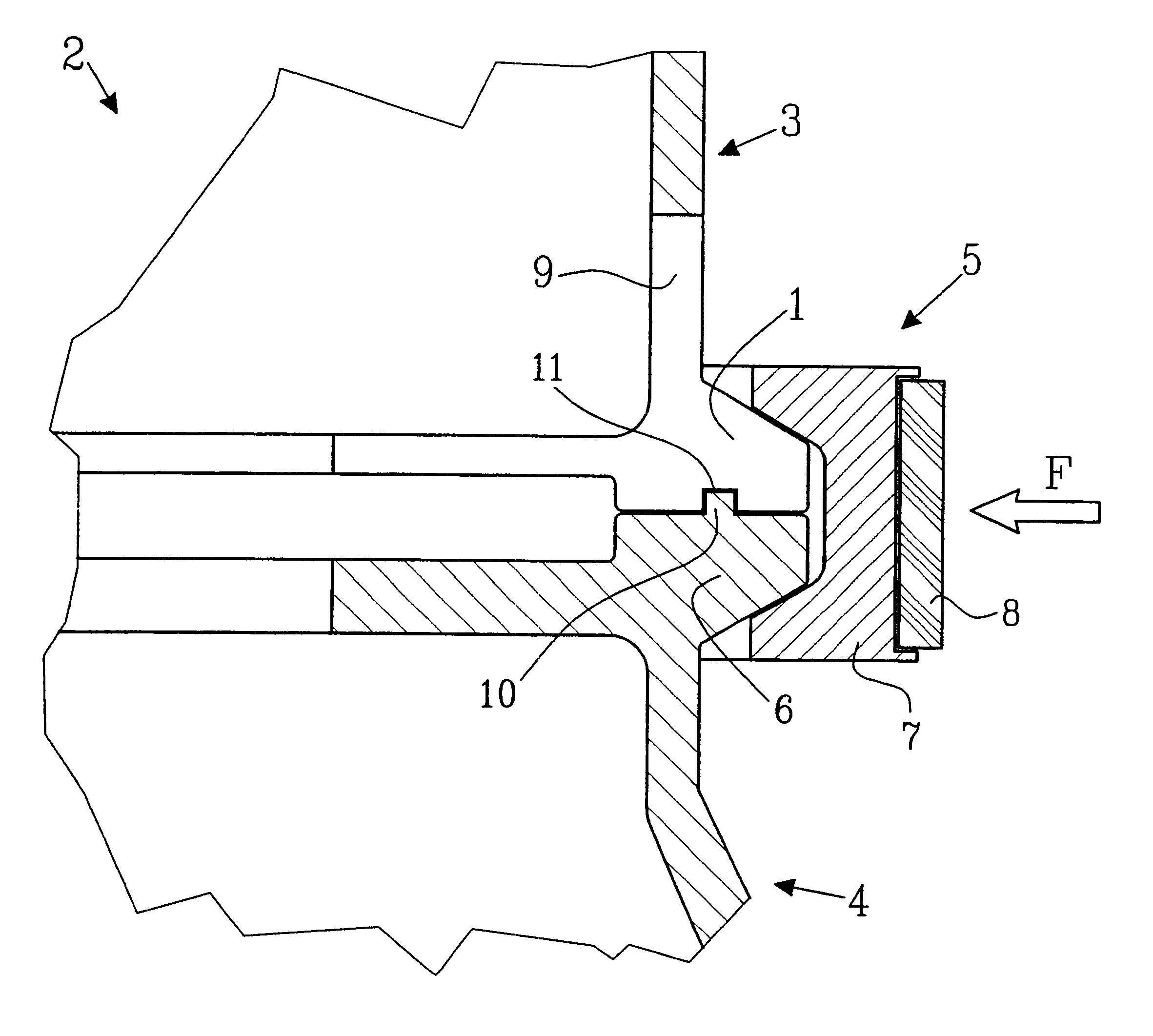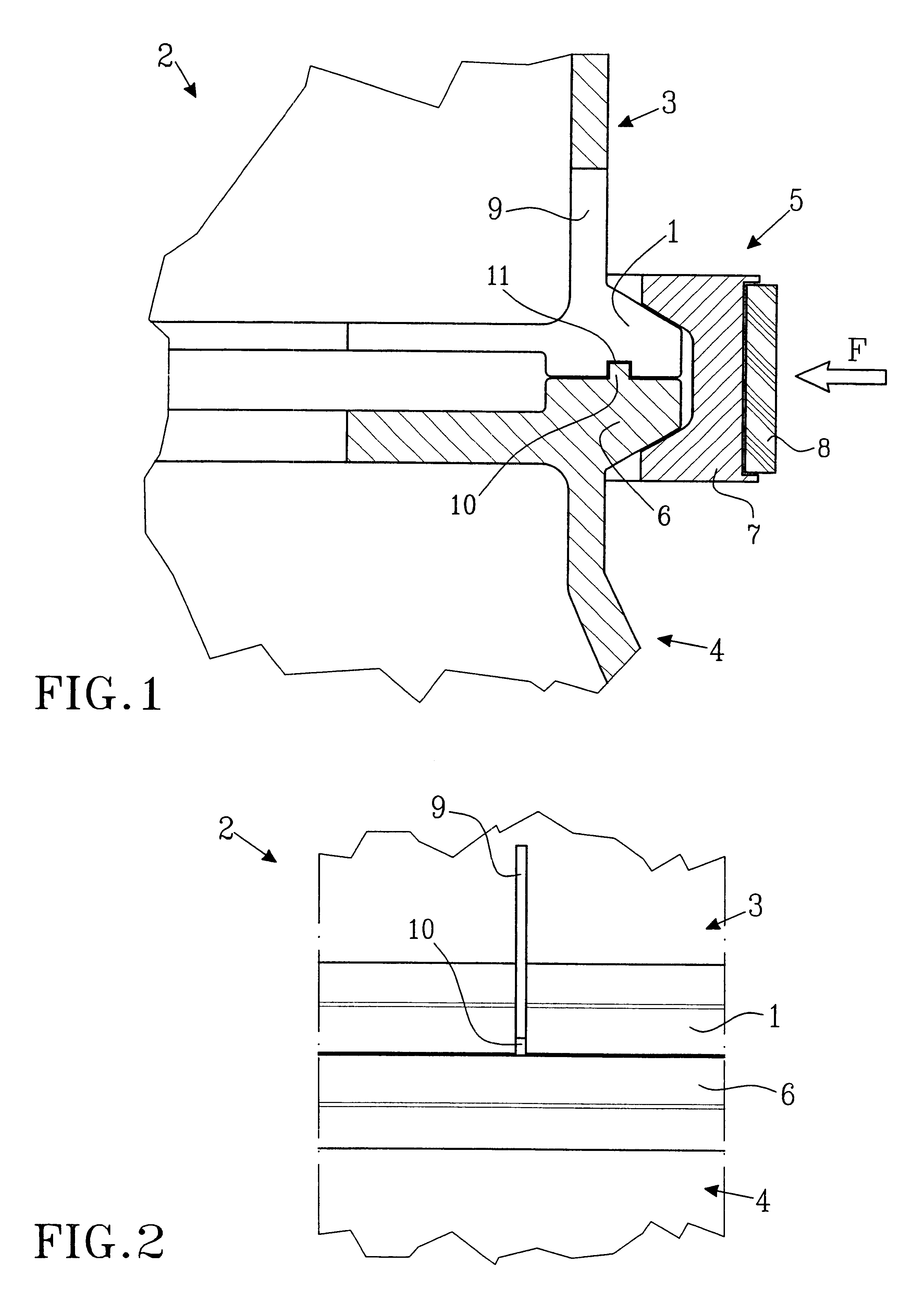Device for a space vessel
a technology for space vessels and devices, applied in the direction of cosmonautic components, rod connections, sheet joining, etc., can solve the problems of impact and/or shock waves in the parts of space vessels, and it is difficult to rectify any errors that may arise, so as to reduce the energy stored
- Summary
- Abstract
- Description
- Claims
- Application Information
AI Technical Summary
Benefits of technology
Problems solved by technology
Method used
Image
Examples
Embodiment Construction
A first flange is designated in the drawing as 1, and a space vessel is designated as 2. The space vessel 2 includes two mutually separable parts 3, 4, e.g. a satellite part 3 placed on a booster rocket, 4, the "launcher part." A coupling 5 is arranged so as to hold the two parts 3, 4 together during that portion of the time in which the coupling 5 is in use.
The coupling 5 comprises the first flange 1 fixedly mounted on a lower portion of the first space vessel part 3 and a second flange 6 fixedly mounted on an upper portion of the second space vessel part 4. The coupling 5 further comprises one or more clips 7 distributed about the periphery of the flanges 1, 6 and a tensioning element 8 that runs around or through the clips 7 and pushes them radially inward against the flanges 1, 6. The clips 7 are thus arranged so as to convert a radial force from the tensioning element 8 into a clamping force and clamp the flanges 1, 6 against one another. The inward radial force of the tensioni...
PUM
 Login to View More
Login to View More Abstract
Description
Claims
Application Information
 Login to View More
Login to View More - R&D
- Intellectual Property
- Life Sciences
- Materials
- Tech Scout
- Unparalleled Data Quality
- Higher Quality Content
- 60% Fewer Hallucinations
Browse by: Latest US Patents, China's latest patents, Technical Efficacy Thesaurus, Application Domain, Technology Topic, Popular Technical Reports.
© 2025 PatSnap. All rights reserved.Legal|Privacy policy|Modern Slavery Act Transparency Statement|Sitemap|About US| Contact US: help@patsnap.com


